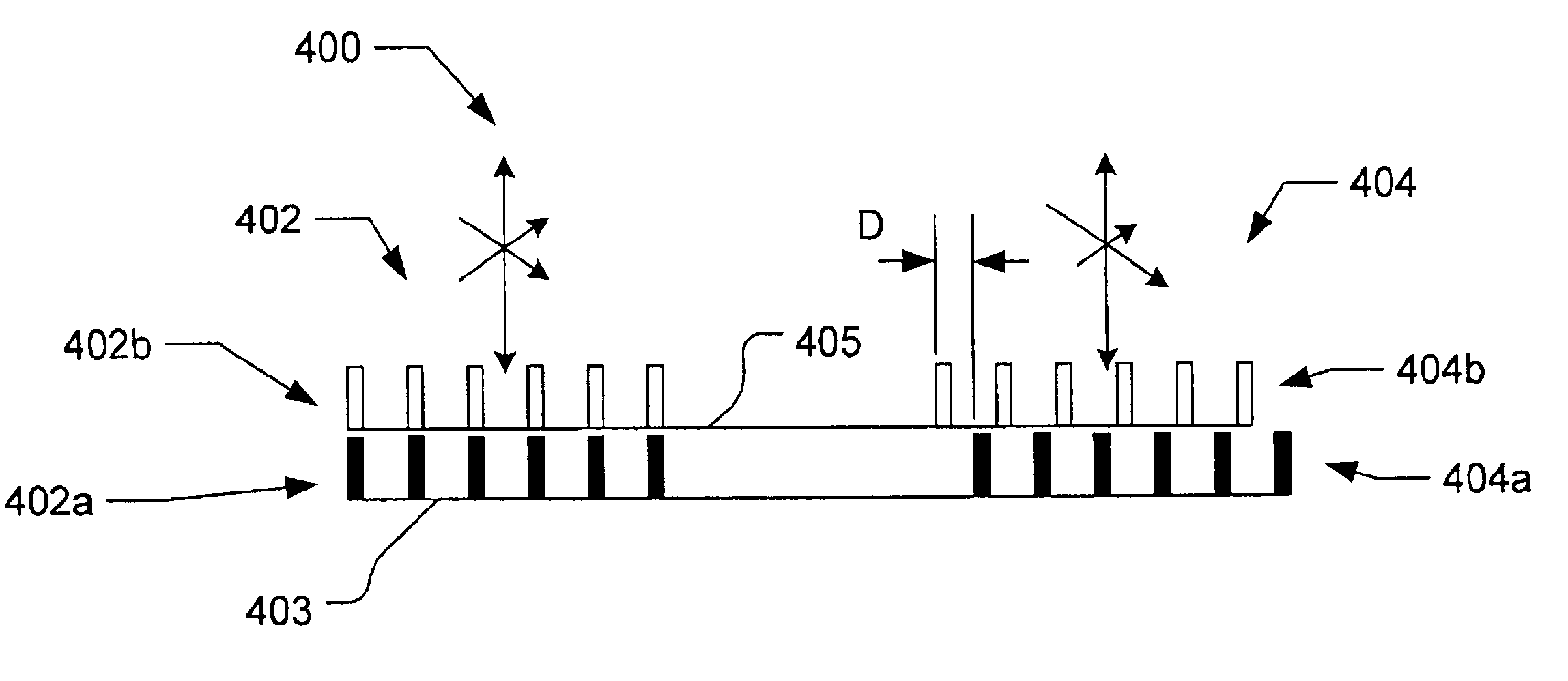Measuring an alignment target with multiple polarization states
- Summary
- Abstract
- Description
- Claims
- Application Information
AI Technical Summary
Benefits of technology
Problems solved by technology
Method used
Image
Examples
Embodiment Construction
[0030]An alignment target, in accordance with the present invention, can be used to align two elements. For example, the alignment target can be used to align a substrate and / or a reticle with respect to a stationary element, e.g., the lens, in an exposure tool. Of course, the alignment target is not limited to use in an exposure tool, but may be used to align any two elements. Additionally, the alignment target can be used to measure the amount of alignment error between any two elements, such as two layers on a substrate or any other elements.
[0031]The alignment target of the present invention and method of use is similar to the alignment target used to assist in the alignment process and to measure alignment error as described in U.S. Patent Applications “Positioning Two Elements Using an Alignment Target With A Designed In Offset” by Weidong Yang, Roger R. Lowe-Webb, John D. Heaton and Guoguang Li, Ser. No. 10 / 116,964 “Alignment Target with Designed in Offset” by Weidong Yang, R...
PUM
 Login to View More
Login to View More Abstract
Description
Claims
Application Information
 Login to View More
Login to View More - R&D
- Intellectual Property
- Life Sciences
- Materials
- Tech Scout
- Unparalleled Data Quality
- Higher Quality Content
- 60% Fewer Hallucinations
Browse by: Latest US Patents, China's latest patents, Technical Efficacy Thesaurus, Application Domain, Technology Topic, Popular Technical Reports.
© 2025 PatSnap. All rights reserved.Legal|Privacy policy|Modern Slavery Act Transparency Statement|Sitemap|About US| Contact US: help@patsnap.com



